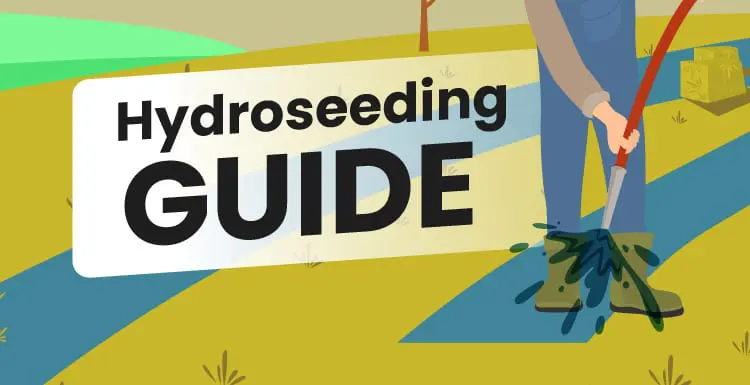Hydroseeding your lawn can give you lush, full grass coverage at an affordable cost.
Hydroseeding is a bit more complicated than broadcast seeding or sod installation but has the potential to deliver equally beautiful results in a short time.
If you’re thinking about hydroseeding your lawn as opposed to spreading grass seed or laying sod, you’ll want to know about the process, special considerations, average costs, and pros and cons.
We’ll even help you connect with a local hydroseeding service if you’re interested in getting a quote. Let’s get started!
What Is Hydroseeding?
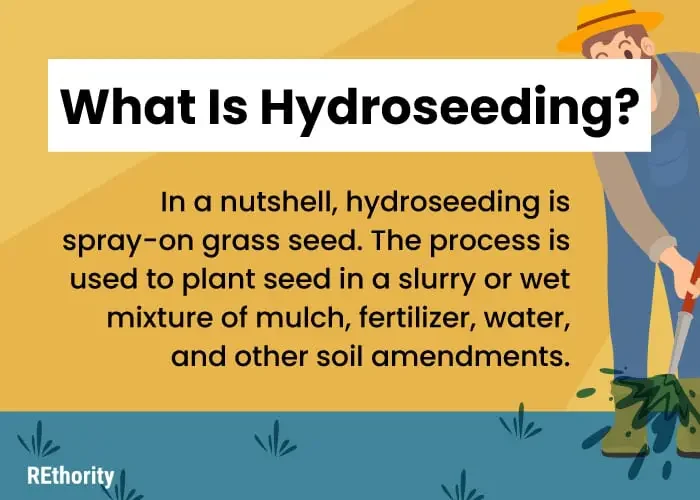
In a nutshell, hydroseeding is spray on grass seed.
The process is used to plant seeds in a slurry or wet mixture of mulch, fertilizer, water, and other soil amendments. It’s typically used in lawns or areas that are:
- Very large
- Contain uneven slopes
- Benefit from erosion, dust, or weed control
Hydroseeding works well compared to broadcasting seed because it’s a wet mixture that sticks to the ground wherever it is applied. Grass seed is very light.
So without the heavier mixture used in hydroseeding, rain, and wind can easily carry the seed away and prevent it from germinating.
The mulch used in hydroseeding is heavy enough to weigh the grass seed down and create a protective blanket over the seeds as they germinate.
Why It’s Effective
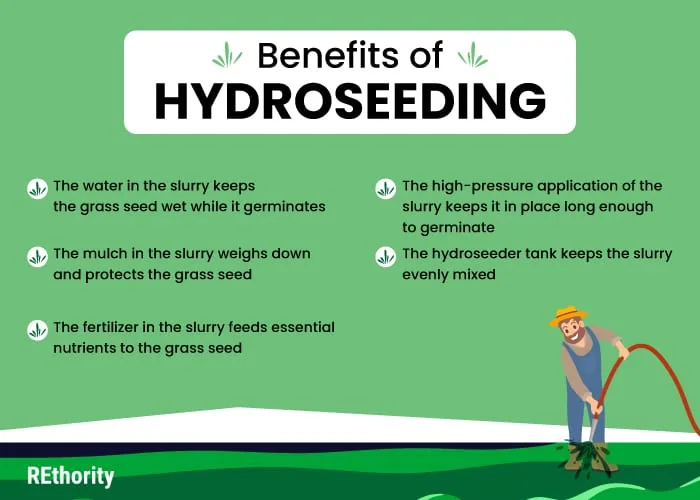
Hydroseeding is effective because of 5 key principles:
- The water in the slurry keeps the grass seed wet while it germinates
- The mulch in the slurry weighs down and protects the grass seed
- The fertilizer in the slurry feeds essential nutrients to the grass seed
- The high-pressure application of the slurry keeps it in place long enough to germinate
- The hydroseeder tank keeps the slurry evenly mixed
The most significant difference between slurries other than seed type is the type of mulch that’s added. These include:
- Wood Fiber Mulch
- Blended Mulch
- Paper Mulch
Sometimes these mulches also contain other ingredients like synthetic fibers and sawdust, which helps it perform better.
Best Mulch for Hydroseeding
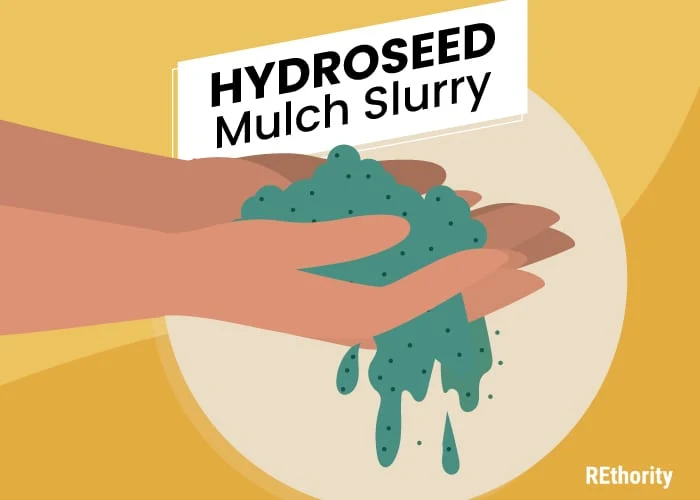
Each mulch type listed above performs at a certain level and has a different cost. Wood Fiber Mulch is typically the most effective (and priciest).
Why? Because it’s both heavier and more protective of the seeds. Blended Mulch is a combination of wood fiber and paper (usually 70% wood and 30% paper).
This makes it a more affordable option than Wood Fiber Mulch. While still effective, it’s not as protective. Paper Mulch is generally not recommended at all.
Special Considerations
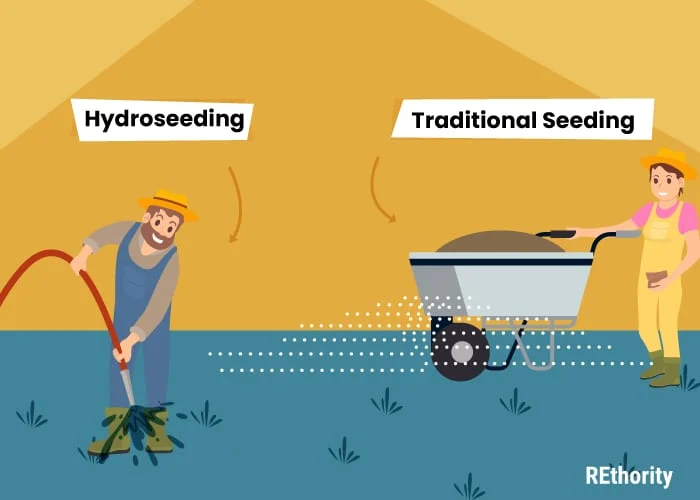
Hydroseeding helps grass seed germinate faster than typical dry seed. It takes anywhere from a week to 3 weeks for a hydroseeded lawn to grow.
The season of application is vital to consider if you’re interested in hydroseeding. Mild, wet, cool times of year will give you the best results and ensure your grass seed doesn’t dry out after hydroseeding.
Water, Water, Water
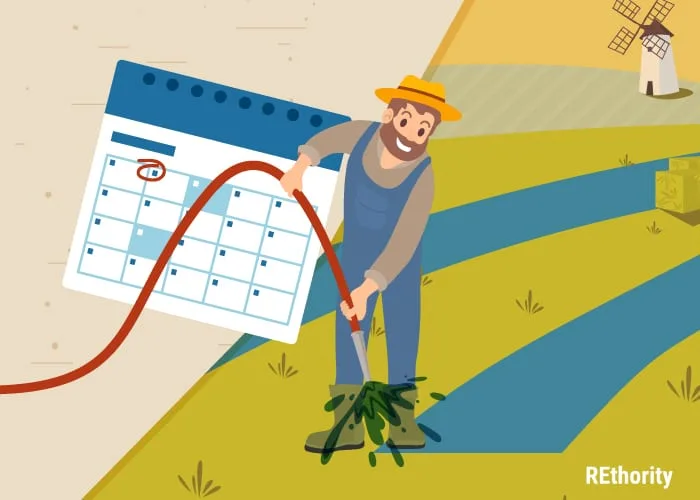
If you’re in a very hot or dry area, you may need to water your lawn more than once per day to increase hydroseeding effectiveness. You can make your hydroseeding service more efficient by first doing a few tasks.
Remove any debris on your lawn, including sticks and rocks. Use a crabgrass killing solution or manually remove it if you have crabgrass in your lawn at least a week (preferably two weeks).
Do not use any additional fertilizers or grass seed on your lawn for at least a week before your appointment – there is fertilizer in the hydroseeding slurry, and too much can damage your lawn.
DIY or Call a Professional?
If you’re thinking about hydroseeding your lawn yourself, you may be in for a challenge more expensive, time-consuming, and difficult than you think.
Not only is experience and knowledge required to mix and apply the slurry properly, but it’s possible to damage your lawn by adding too much water or fertilizer to your mixture.
Improperly applied hydroseeding slurry can encourage weeds and crabgrass to take over. Using too much or too little hydroseeding slurry can drown your existing grass or result in spotty grass growth easily overtaken by weeds.
The equipment required for effective hydroseeding is costly. Hydroseeding requires a large tank to hold and continually mix the slurry, much like a cement mixer keeps moving to keep the cement evenly mixed.
Generally, it’s recommended to leave hydroseeding to an expert who can ensure mistakes are avoided and get your lawn in top-notch shape much faster.
How Much Does Hydroseeding Cost?
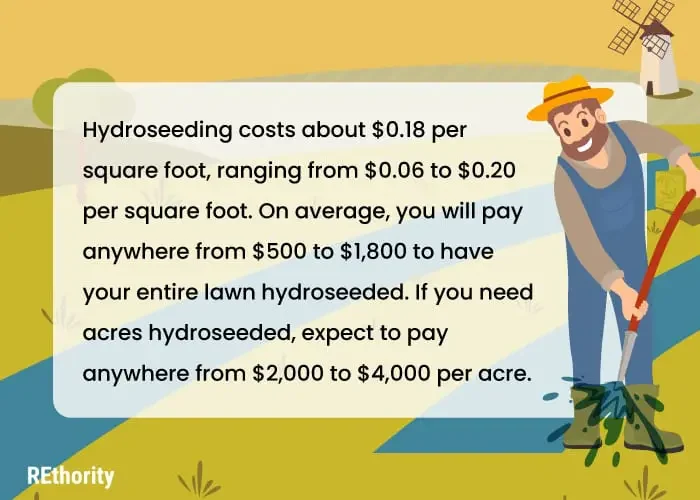
Hydroseeding is inexpensive compared to sod, but more expensive than simple, dry grass seed. Let’s look at the average hydroseeding costs so you’ll have an idea of what you can expect to pay.
According to Homeadvisor.com, hydroseeding costs about $0.18 per square foot, ranging from $0.06 to $0.20 per square foot. On average, you will pay anywhere from $500 to $1,800 to have your entire lawn hydroseeded.
If you need acres hydroseeded, expect to pay anywhere from $2,000 to $4,000 per acre. Compare that to the cost of laying sod, which starts at about $0.28 to $0.45 per square foot if you install it yourself.
A professional installing sod costs anywhere from $1.00 to $2.00 per square foot. While it’s not best for everyone, you can save a ton of money on most lawns.
What’s Included in the Cost of Hydroseeding?
Your hydroseeding pro has the proper equipment, including a hydroseeding tank and hose, quality grass seed, and any materials needed to test your soil pH and prepare your lawn for application.
This equipment is worked into the price of your hydroseeding service. If your service has to prepare your lawn by removing rocks, sticks, or crabgrass before beginning, an additional cost may be included in the final price.
Finally, the labor of applying the hydroseed slurry to your lawn is included in the price. Keep in mind that a typical lawn may require 4 to 5 hours of hard work to complete.
DIY Hydroseeding Costs
If you decide to try hydroseeding yourself, you’ll have to purchase or rent the right equipment for the job. You can rent one of these machines for about $300 to $500 per day.
But at that point, you’re getting close to paying what a professional would charge you to take care of the entire job – and you’re still going to have to commit about 5 hours to the job.
You can mix the slurry you’ll need to put into the hydroseeding tank, but it’s easy to make a mistake in the ratios of the components (seed, fertilizer, water, mulch).
You can purchase spray mixtures at your local hardware store for anywhere from $20 to $80 per gallon. But these mixtures are of lower quality and may contain weed seeds and fillers.
Hydroseeding Pros and Cons
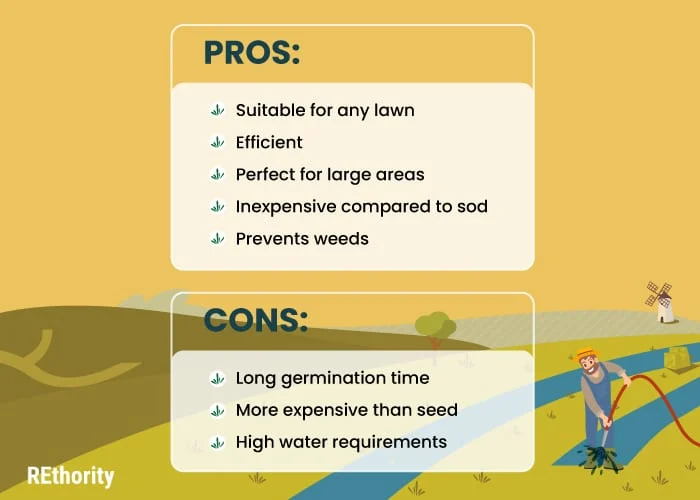
There are certainly pros and cons to choosing hydroseeding over sod or dry grass seed. Let’s go over some of the benefits and disadvantages of using this seed application method.
Pros (what we like)
- Suitable for Any Lawn. Sloping ground, large fields, or areas prone to erosion are all great candidates for hydroseeding.
- Efficient. Hydroseeding seed germination happens faster than regular grass seed, which can take a few months to establish.
- Perfect for Large Areas. If you have acres or a large field to seed, hydroseeding is the perfect choice because it can easily be applied to large areas.
- Inexpensive Compared to Sod. Hydroseeding costs much less than sod, especially if you have a large lawn or field to cover.
- Prevents Weeds. Hydroseeding helps the grass seed stick the areas it’s applied to, giving an even coverage that helps prevent weeds from taking over.
Cons (what we dislike)
- Germination Time. Hydroseeding takes longer than sod installation. While laying sod gives instant results, hydroseeding grass can take a few weeks for the seeds to germinate.
- Cost Compared to Grass Seed. Hydroseeding is more expensive than spreading grass seed alone, which only costs about $0.20 to $0.50 per square foot (plus the time and labor involved in spreading or broadcasting it).
- Water Requirements. Hydroseeding requires water in the slurry mixture to apply the grass seed and keep the mix and lawn damp for a few weeks as the grass seed germinates and grows.
Where to Find a Hydroseeding Service
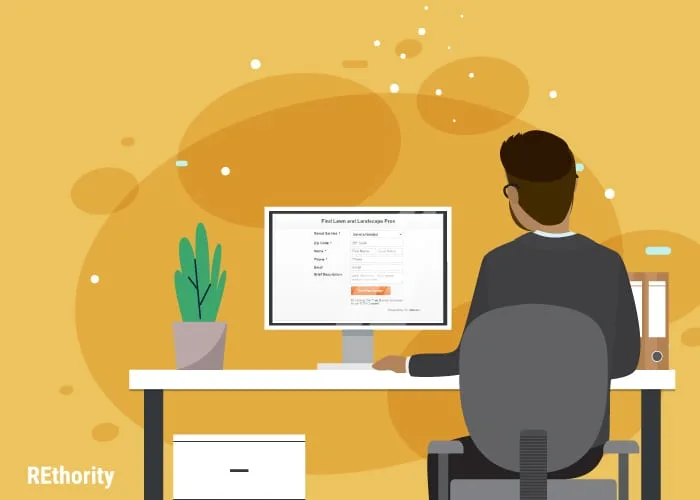
Finding a local hydroseeding service shouldn’t be difficult – many lawn and landscaping services offer hydroseeding. The key is finding the best hydroseeding service in your area with a good reputation for quality service.
You can search online for reviews, ask for recommendations from friends and neighbors, or talk with a local golf course, athletic field, or park managers to find out who handles their hydroseeding.
Most hydroseeding companies will give free quotes so you’ll know what to expect price-wise. Some companies are offering video consultations during the COVID-19 pandemic to keep within social distancing guidelines.
Be sure to check with your hydroseeding service to see how they’ll handle the estimate and application. And we make it easy for you to connect with a pro using an embedded form.
Is Hydroseeding Right for You?
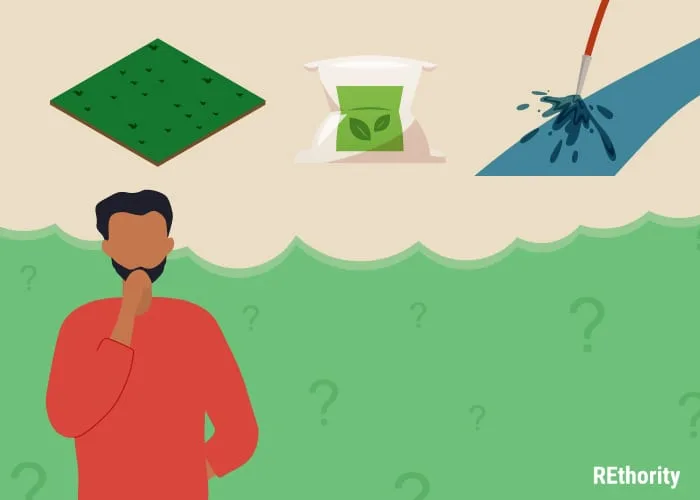
After learning about hydroseeding, the average costs, finding a quality service to do it, and associated pros and cons, you may have a clearer idea of whether or not hydroseeding is the best method to use to seed your lawn.
- Is your yard larger than 500 square feet? Smaller lawns may be better off using broadcast seed application methods. Average-sized and large lawns will benefit more from using hydroseeding.
- Is your yard uneven, or does it contain slopes? Dry seed tends to erode and fail to grow on hills, so hydroseeding is your best option if you have a hilly or uneven yard to contend with.
- Are there water restrictions in your area? Hydroseeding requires a lot of water usage to help the grass get established in your lawn, keeping any local water restrictions in mind.
- Are you looking for instant results? Hydroseeding helps grass seed germinate much faster than dry seeding alone, but only sod can deliver immediate results.
Hydroseeding is the most cost-effective and efficient method for most people. Call a local landscaping or lawn service to determine how much it will cost to hydroseed the area.
You could be enjoying a lush, full lawn without weeds in just a few weeks! Think this method of seeding is for you? Scroll up to connect with a pro for a free quote today.
Resources:

